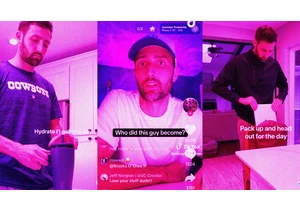With a solar eclipse recently plunging parts of the world in darkness—and the #1 show on Netflix highlighting the chaos caused by multiple celestial bodies in motion (3 Body Problem)—it’s safe to say that the stars have captured the popular imagination yet again. Astronomers, physicists, and other scientists have seized the moment to educate the public about their fields, and even local organizations like libraries threw events to capitalize on the interest (and teach people not to look directly at the sun).
All of the hubbub about the movement of the spheres reminds us of one simple fact: You can’t know how fast you’re going unless you have a frame of reference. While this certainly applies to physics problems that only people like Einstein (literally) can figure out, it also applies to the business problems many of us face every day. It’s especially important to keep this concept in mind when it comes to implementing new technologies. The newer the tech, the more likely you’ll be lost when it comes to mapping out how well you’re using it, and how you’re positioned relative to competitors in your field.
Bring in a maturity model
In another article, I described how an AI flywheel can power your movement forward, helping you gain momentum with new technology like generative AI-powered bots. However, as anyone who’s serious about driving growth knows, it’s important not only to start moving in the right direction, but also to keep measuring that movement. This is where a maturity model comes in.
While maturity models look different depending upon the technology you’re applying them to, the core principle is this: No matter where you are in your journey, you can evaluate your progress if you compare against industry benchmarks. To return to the celestial metaphors, this provides the frame of reference you need to see how quickly you’re rocketing off toward your goals—and what you need to do to move faster.
Let’s bring this down to earth with an example. At LivePerson, we’ve drawn up industry-specific maturity models based on what we know our enterprise customers in each field have achieved so far. The average airline, for example, has a customer satisfaction score of 80% for conversations with bots. If you’re lagging behind at 70%, you’d get a rating of two out of five stars on that specific benchmark.
However, let’s also say your airline is successfully shifting many more phone calls into digital conversations than the industry average of 25%, giving you a five out of five star rating for that metric. As you start to look at about 20 of these comparisons, you can get a very good sense of how well you are performing in your field.
One of the most powerful aspects of maturity models, regardless of the technologies you’re leveraging or the industry you work in, is that they provide both clarity and direction. They take pieces of information that you already have about your business and turn them into next steps. They can give you the confidence to set goals like “if we can reduce our first response time by 30 seconds and contain 10% more conversations using bots, we’ll be outperforming our competitors on those fronts.” Taking those small steps will add up to a giant leap for your business.
When it comes to adopting the tech that will propel your business forward, everyone is on a different point on their journey, and that’s okay. What’s not okay is having no idea where you’re at or how fast you’re moving toward your goals. Luckily, this isn’t actual rocket science, and most of us aren’t facing three-body problems or string theory-level paradoxes. Anyone can get started charting their path with tools like maturity models.
Ruth Zive is chief marketing officer at LivePerson and host of the Generation AI podcast.
Accedi per aggiungere un commento
Altri post in questo gruppo

Sudden equipment failures. Supply chain surprises. Retaining staff as the goalposts move in real time. These aren’t challenges I’ve faced as a tech founder—but I have faced them running restaurant

Amazon recently announced that it had deployed its one-millionth robot across its work
On this week’s Most Innovative Companies podcast, Cloudflare COO Michelle Zatlyn talks with Fast Company staff writer David Salazar about hitting $1B in revenue and going global, as well as

If you’ve built an audience around documenting your 9-to-5 online, what happens after you hand in your notice?
That’s the conundrum facing Connor Hubbard, aka “hubs.life,” a creator who

OpenAI should continue to be

WhatsApp should prepare to leave the Russian market, a lawmaker who regulates the IT sector

This is an edition of Plugged In, a weekly newsletter by Fast Company global technology editor Harry McCracken. You can sign up to receive it each Friday and read all issues
